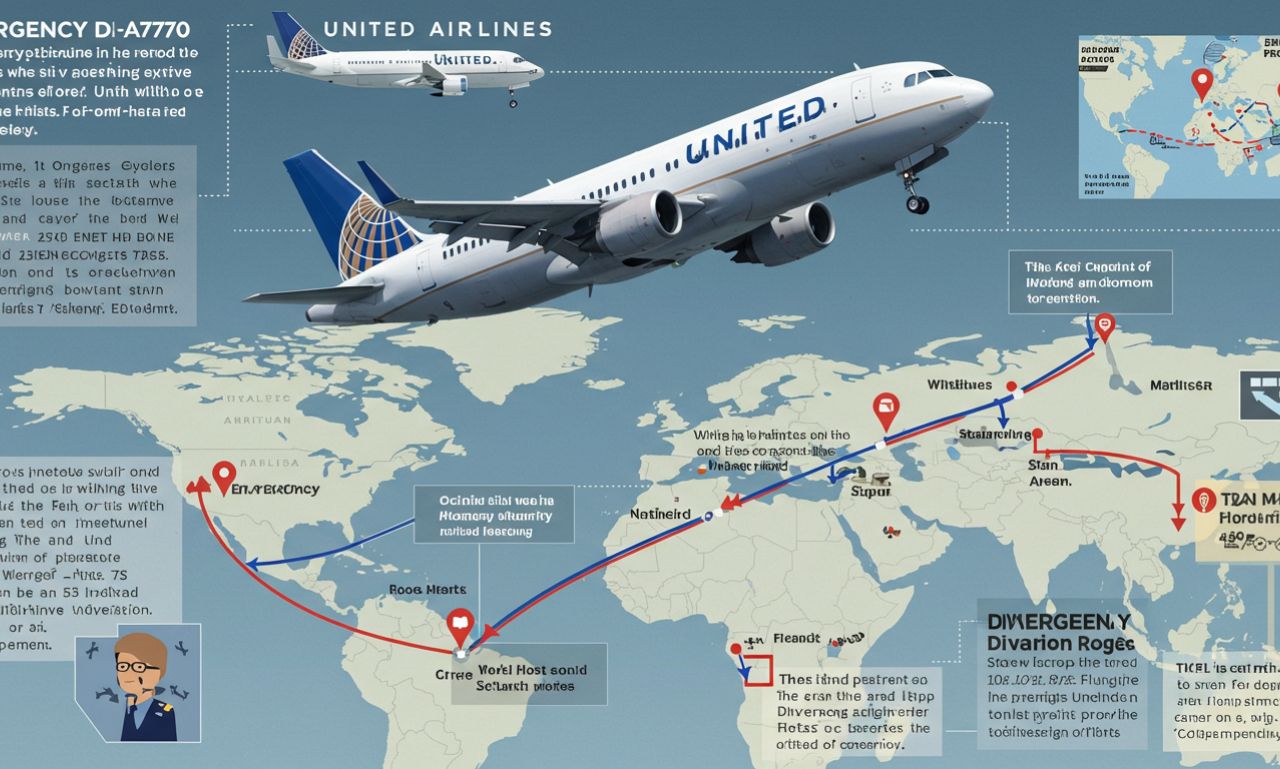Aviation is one of the safest modes of transport, yet incidents occasionally occur that remind us how critical safety protocols are in ensuring secure journeys. One such case was the United Airlines Flight UA770 emergency diversion, which captured public attention and sparked conversations about aircraft safety, crew response, and passenger experiences.
This article explores the event in depth—covering the technical cause, emergency measures, passenger accounts, operational response, and lessons learned.
United Airlines Flight UA770 Emergency Diversion: What Happened?
United Airlines Flight UA770 was en route on a routine journey aboard a Boeing 787-9 Dreamliner when a pressurization system alert was detected. Such warnings are rare but taken extremely seriously, as cabin pressure is essential for safe breathing conditions at cruising altitudes of over 35,000 feet.
Upon identifying the issue, the flight crew declared an emergency using the international aviation distress code Squawk 7700. This immediately signaled to air traffic control (ATC) and other nearby aircraft that UA770 required priority handling.
United Airlines Flight UA770 Emergency Diversion: Why Heathrow Was Chosen
The pilots decided to divert the aircraft to London Heathrow Airport. This decision was based on several factors:
-
Proximity – Heathrow was the nearest major international hub capable of handling a Dreamliner.
-
Emergency Preparedness – Heathrow has advanced facilities, fire services, and medical support for unexpected diversions.
-
Operational Support – United Airlines already has ground staff and technical resources at Heathrow, enabling faster passenger assistance.
This combination of logistical and safety advantages made Heathrow the safest and most practical choice.
United Airlines Flight UA770 Emergency Diversion: Crew Response
The professionalism of the flight deck and cabin crew was crucial. Key actions included:
-
Monitoring oxygen levels and ensuring no immediate threat to passenger health.
-
Calm announcements that reassured travelers without causing panic.
-
Coordination with ATC, ensuring a clear and expedited landing path.
Notably, oxygen masks were not deployed, suggesting the situation was precautionary rather than a severe depressurization event.
Passenger Experience Onboard
Passengers later reported a sense of unease but not chaos. The calm demeanor of the crew helped prevent panic. Instead of alarm, there was quiet cooperation, with travelers following crew instructions and preparing for an unscheduled landing.
One passenger described the moment as “unsettling but handled with incredible professionalism,” capturing the balance between anxiety and reassurance that defined the cabin atmosphere.
United Airlines Flight UA770 Emergency Diversion: Post-Landing Operations
Upon landing safely at Heathrow, a series of immediate support measures followed:
-
Technical inspections were carried out on the aircraft’s pressurization system.
-
Passenger accommodations were arranged, including rebooking on alternative flights and hotel stays.
-
Meals and transport were provided as part of United Airlines’ care package.
-
Official statements from United emphasized safety as the top priority and praised the crew’s response.
This demonstrated how airlines not only handle emergencies in the air but also manage their aftermath responsibly.
Why Pressurization Matters in Aviation
Cabin pressurization is one of the most critical safety systems on modern aircraft. At cruising altitude, natural air pressure is too low for humans to breathe comfortably. Without pressurization, passengers and crew could experience hypoxia within minutes.
The Boeing 787-9 is equipped with redundant pressurization systems and automated warnings that detect anomalies before they escalate. UA770’s diversion shows these systems worked as designed—promptly identifying a potential hazard and prompting a safety-first response.
United Airlines Flight UA770 Emergency Diversion: Impact on Operations
An emergency diversion like UA770 has ripple effects:
-
Scheduling disruptions – aircraft rotations and crew schedules require adjustments.
-
Passenger inconvenience – delays, rebookings, and altered itineraries occur.
-
Airport logistics – handling an unexpected widebody aircraft arrival requires coordination.
Despite these challenges, Heathrow and United Airlines managed the situation efficiently, minimizing long-term disruption.
Crew Training and Preparedness
The flawless handling of UA770 underscores the importance of intensive crew training. Pilots undergo simulator training for pressurization failures, including both gradual and rapid depressurization scenarios. Cabin crews are trained to:
-
Keep passengers calm
-
Demonstrate mask use if necessary
-
Ensure safety compliance
The seamless coordination observed during UA770’s diversion reflects how practice translates into real-world preparedness.
Comparing UA770 with Other Diversions
United Airlines Flight UA770 is not the only modern diversion caused by pressurization concerns. Similar incidents have occurred with other airlines, including Delta and American Airlines, where precautionary landings ensured passenger safety.
These events highlight that diversions are not signs of weakness in aviation but proof of safety systems functioning properly.
United Airlines Flight UA770 Emergency Diversion: Passenger Rights
Travelers affected by diversions are entitled to support under both airline policies and international regulations. In UA770’s case, passengers received:
-
Meals and refreshments during delays
-
Hotel accommodations where overnight stays were required
-
Rebooking options on the earliest available flights
United Airlines’ handling of these obligations ensured travelers were inconvenienced but not abandoned.
Global Media Attention
The UA770 incident gained traction in news outlets and aviation forums. Discussions centered on:
-
The speed of the crew’s decision-making
-
How redundant systems protect passengers
-
The reassurance that aviation remains the safest form of travel
This widespread coverage reinforced public awareness of aviation safety protocols.
Lessons Learned from UA770
The UA770 diversion illustrates several key lessons:
-
Safety first, schedule second – diversions may cause delays, but protecting lives is always the priority.
-
Crew professionalism matters – calm, experienced crews reduce passenger stress.
-
Modern aircraft systems work – alerts triggered correctly, enabling preventive action.
-
Passengers should stay calm – trust in airline protocols ensures a smoother experience.
Conclusion
The United Airlines Flight UA770 emergency diversion is a prime example of aviation safety systems working exactly as intended. A potential issue was detected, the crew acted decisively, and all passengers reached the ground safely.
While the event disrupted travel schedules, it reinforced the industry’s commitment to prioritizing safety above all else. For passengers, UA770’s diversion serves as a reminder that diversions are not failures—but successful demonstrations of safety culture, technology, and crew expertise in modern aviation.

